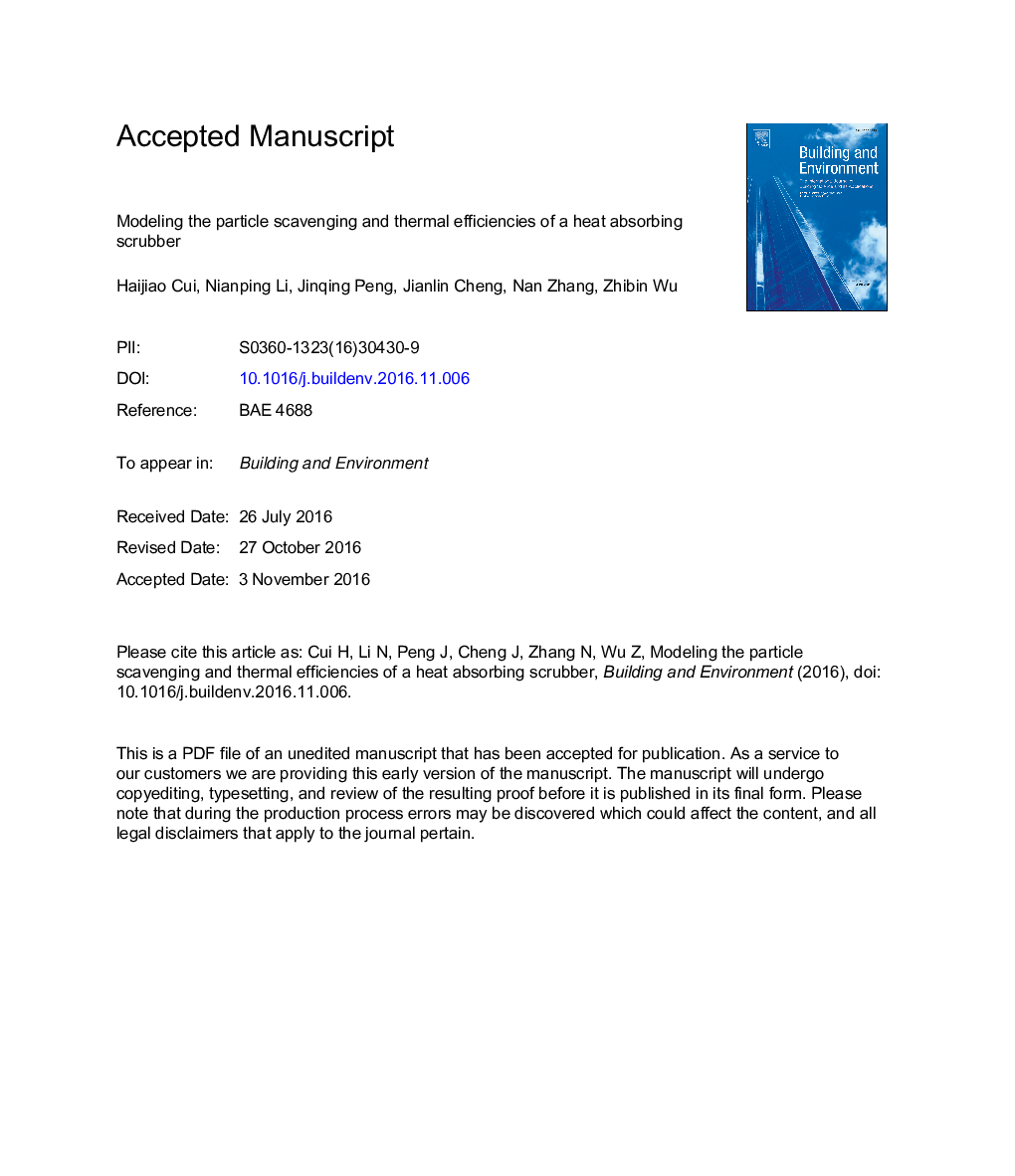| کد مقاله | کد نشریه | سال انتشار | مقاله انگلیسی | نسخه تمام متن |
|---|---|---|---|---|
| 4917520 | 1428381 | 2017 | 33 صفحه PDF | دانلود رایگان |
عنوان انگلیسی مقاله ISI
Modeling the particle scavenging and thermal efficiencies of a heat absorbing scrubber
ترجمه فارسی عنوان
مدل سازی ذرات ریزدانه و کارایی حرارتی یک اسکرابر جذب گرما
دانلود مقاله + سفارش ترجمه
دانلود مقاله ISI انگلیسی
رایگان برای ایرانیان
کلمات کلیدی
آلودگی هوا پمپ حرارتی، اسکرابر، کارایی مجموعه، بازده حرارتی،
موضوعات مرتبط
مهندسی و علوم پایه
مهندسی انرژی
انرژی های تجدید پذیر، توسعه پایدار و محیط زیست
چکیده انگلیسی
Haze pollution has been a serious environmental problem in China. This study proposed a heat absorbing scrubber (HAS) which can not only improve the air quality of outdoor building environment but also absorb energy from the air for space heating through combining with a heat pump system. A particle collection model was developed to calculate the single drop and the overall collection efficiencies with particle diameters ranging from 0.01 to 10 μm. The model was validated by field measurements. The results showed that the overall particle collection efficiency of the HAS reached up to 100% and 83% for PM10 and PM2.5, respectively. Meanwhile, its thermal efficiency reached up to 58%, which indicated that HAS could effectively mitigate haze pollution and achieve a relatively high thermal performance. The impacts of air velocities (0.5, 1.0, 1.5, 2.0 m/s), drop velocities (4, 6, 8, 10 m/s), drop sizes (600, 800, 1000, 1200 μm) on the thermal and particle scavenging performances were discussed in detail. The thermal efficiency and the overall collection efficiency were inversely proportional to the drop diameter. When particle diameter was smaller than 0.7 μm, the thermal efficiency and the overall collection efficiency were also inversely proportional to the initial drop velocity. The results and outcomes of this study are expected to provide a theoretical basis for optimizing the performance of the HAS.
ناشر
Database: Elsevier - ScienceDirect (ساینس دایرکت)
Journal: Building and Environment - Volume 111, January 2017, Pages 218-227
Journal: Building and Environment - Volume 111, January 2017, Pages 218-227
نویسندگان
Haijiao Cui, Nianping Li, Jinqing Peng, Jianlin Cheng, Nan Zhang, Zhibin Wu,
